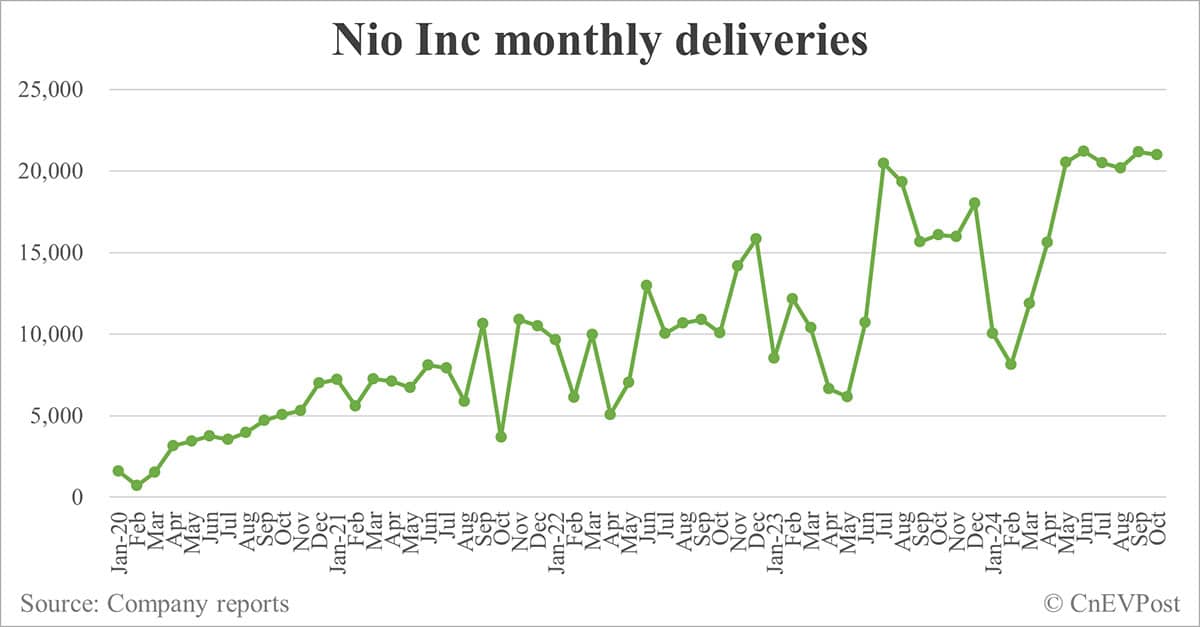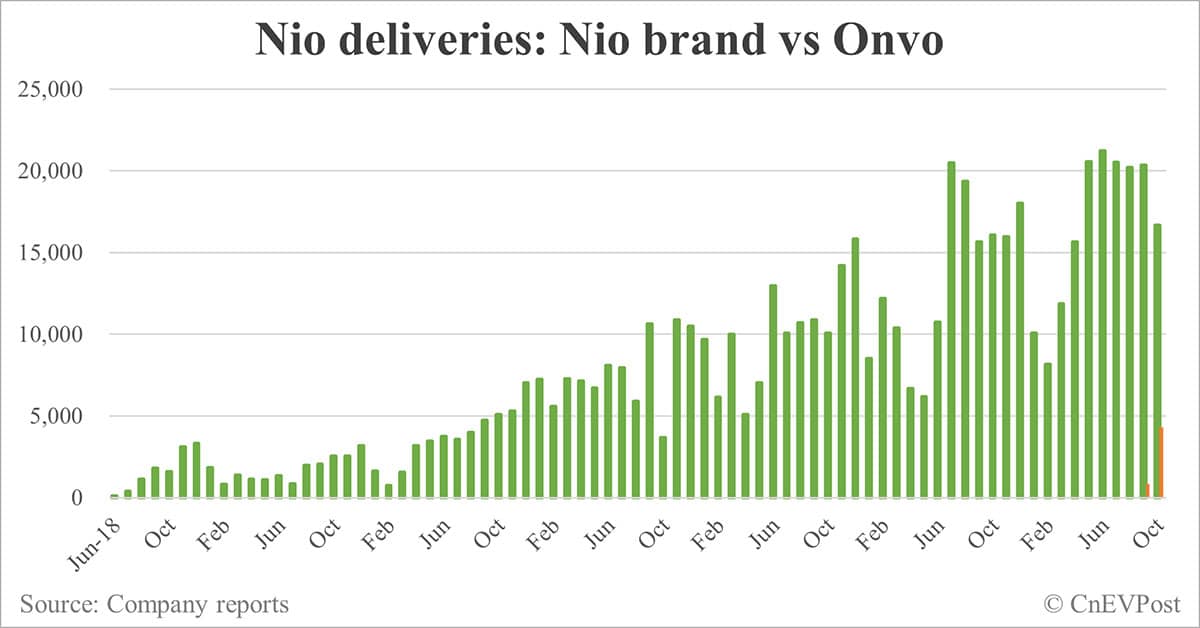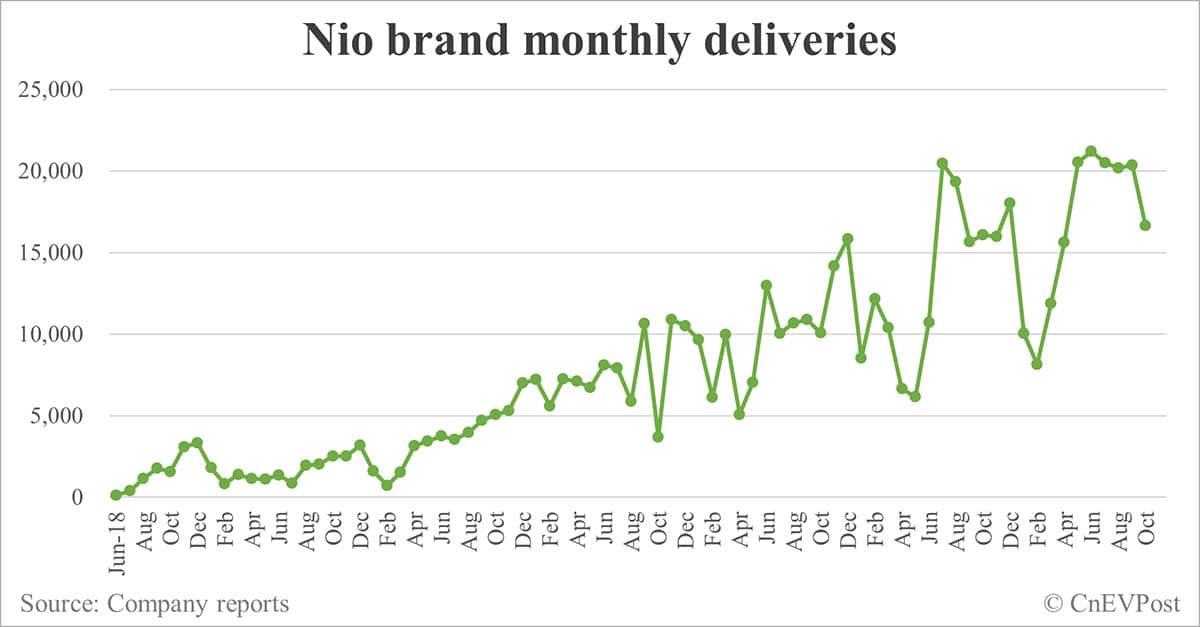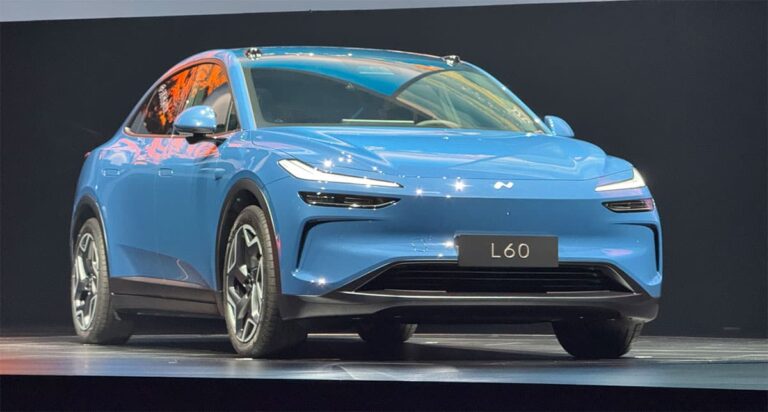The Nio main brand delivered 16,657 vehicles in October, a decrease of 18.14 percent from September. Onvo delivered 4,319 vehicles in October, an increase of 419.11 percent from September.
Nio Inc's (NYSE: NIO) deliveries in October were essentially flat from September, as the Nio main brand declined and sub-brand Onvo grew.
The electric vehicle (EV) maker delivered 20,976 vehicles in October, marking the sixth consecutive month above the 20,000-unit mark, according to data it released today.
This is up 30.50 percent from 16,074 in the same month last year and down 0.97 percent from 21,181 in September.
The Nio main brand delivered 16,657 vehicles in October, up 3.63 percent from 16,074 a year ago but down 18.14 percent from 20,349 in September.
Onvo delivered 4,319 vehicles in October, up 419.11 percent from 832 in September.
Nio Inc delivered 170,257 vehicles in January-October, up 35.05 percent.
The Nio brand delivered 165,106 vehicles in the January-October period, up 30.97 percent year-on-year. The Onvo brand delivered 5,151 vehicles since deliveries began at the end of September.
As of October 31, Nio Inc's cumulative deliveries since its inception stood at 619,851 vehicles, including 614,700 vehicles under the Nio brand and 5,151 vehicles under the Onvo, according to data compiled by CnEVPost.
Onvo's first model, the L60 SUV (sport utility vehicle), was launched on September 19 and deliveries began on September 28.
The model starts at RMB 206,900 ($29,040) including the battery pack, which is RMB 43,000 less than the current RMB 249,900 starting price of the Tesla (NASDAQ: TSLA) Model Y in China.
Under the BaaS (battery as a service) battery rental scheme, the model starts at RMB 149,900 with monthly battery rental fees of RMB 599 or RMB 899 depending on the battery pack capacity.
The Onvo brand is aimed at the price range of RMB 200,000 to RMB 300,000, while the Nio main brand is aimed at the high-end market of RMB 300,000 to RMB 600,000.
Onvo's deliveries this month seem to correspond to its production capacity.
Onvo L60's production capacity was expected to reach 5,000 units in October and 10,000 units in December, William Li, Nio's founder, chairman, and CEO, said in a September 20 media communication.
By January 2025, the model's capacity will reach at least 16,000 units and 20,000 units by March, Li said at the time.
Nio currently has two vehicle assembly plants in Hefei, Anhui province, and they are able to support a capacity of 10,000 units of Nio brand models and 20,000 units of Onvo models each month, Li said.
This capacity planning is not a temporary decision, but the result of communication with supply chain partners that began in the first half of 2022, Li said on September 20.
Li emphasized at the time that capacity increases are subject to the laws of reality for any new model, and that it's not possible to provide a high level of capacity as soon as it's launched.
In October, production and deliveries of the Onvo L60 steadily increased, Nio said in its statement today.
As of October 31, Onvo operated 166 Onvo Centers and Onvo Spaces in 60 cities, according to the company.
Onvo will continue to expand its network of sales, service and battery swap stations to serve its growing user base and drive long-term growth, it said.
The number of Nio battery swap stations currently available to Onvo is 584, the company said.
Nio currently has 2,625 battery swap stations in China, and it aims to have 1,000 stations available to Onvo by the end of the year.
Nio's fourth-generation battery swap stations are directly compatible with Onvo, while the older third-generation stations need to be retrofitted.
($1 = RMB 7.1236)




